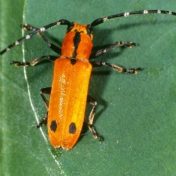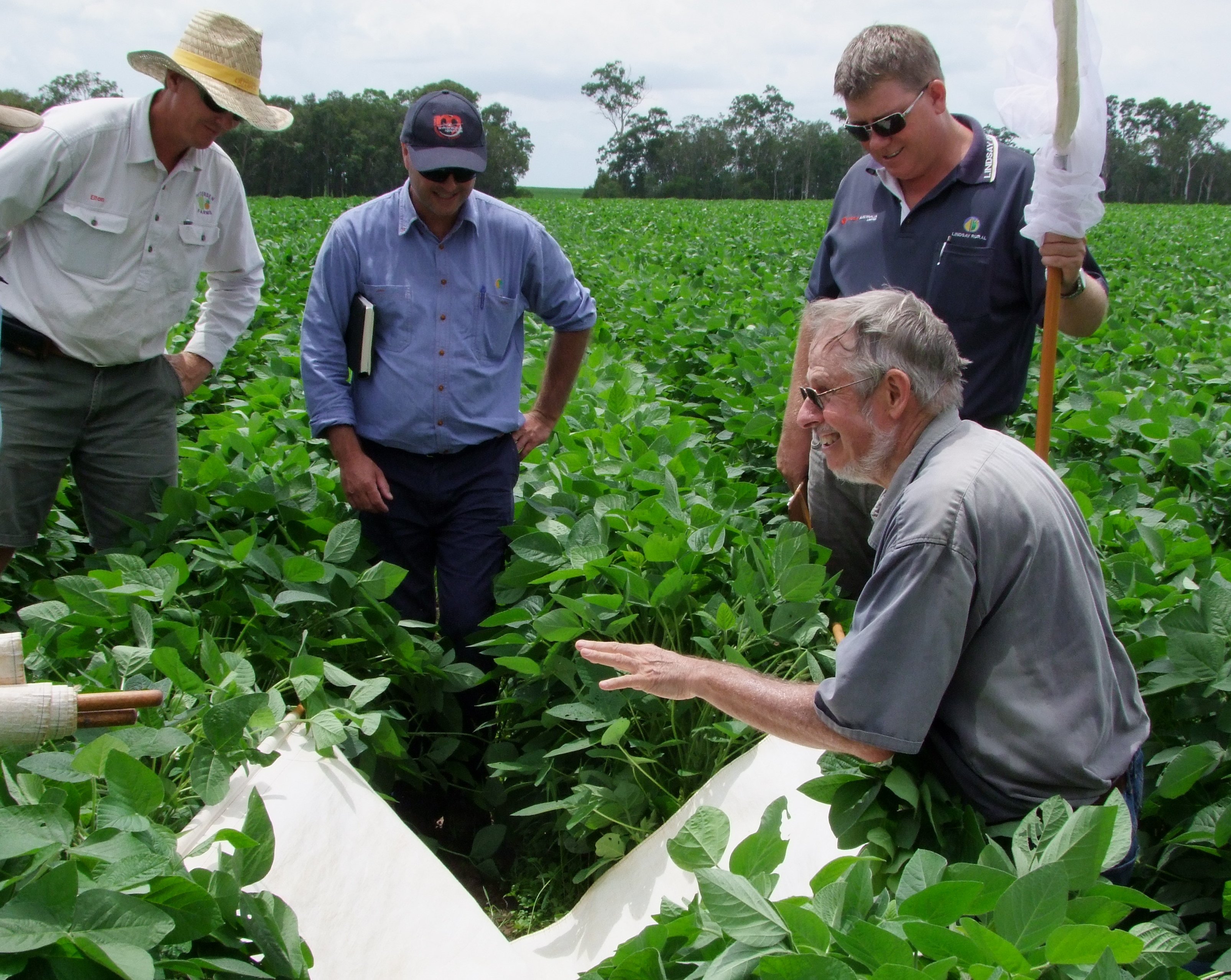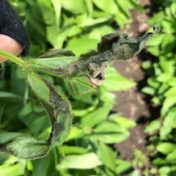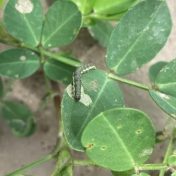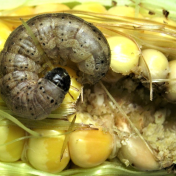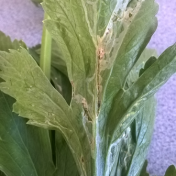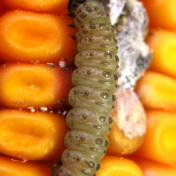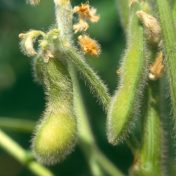Last week the Australian Pesticides and Veterinary Medicines Authority (APMVA) updated minor use permit PER88226 for the in-furrow application of fipronil to manage lucerne crown borer (Zygrita diva, LCB) in soybeans at planting. Changes include: Extension of expiry date to 30 September 2025 Addition of a re-entry statement and S161 statement Adjustments to the protection statement Moving spray drift to… Read more »
How long should my beat sheet stick be? is a question that was asked at a recent Accredited Mungbean Agronomist Course. A common misconception is that a beat sheet stick should be as long as the beat sheet is wide. A standard beat sheet is usually at least 1.5 m across, but the stick should only be 1 metre long…. Read more »
Late damage has been reported recently in an Onyx-AU (PBR*) black gram crop in the Burdekin. The most obvious damage was dead leaves, but closer inspection found full sized larvae (3 mm) and pupae in the petioles of damaged leaves. The causal agent was common bean fly Ophiomyia phaseoli (Agromyzidae), but in this instance control was not warranted, as the… Read more »
Since early 2020, growers and agronomists have been nervous about the prospect of fall armyworm (FAW; Spodoptera frugiperda) invading their crops. So far, the majority of significant and damaging FAW infestations have been recorded from sweet corn, maize, and sorghum crops, with some isolated outbreaks in horticultural crops such as ginger and capsicum. Occurrences in other crops have been a… Read more »
It was expected that many southern Queensland regions would be too cold for fall armyworm (FAW) (Spodoptera frugiperda) to survive. However larval populations were found in the South Burnett and Lockyer Valleys, and small numbers of moths were also detected in pheromone traps on the Darling Downs this winter. Caterpillars and moths in the South Burnett In July, larvae were… Read more »
As we enter the business end of the season, we want our soybean crop’s leaves to be a healthy green, as the healthier the leaves, the more the pods fill and the higher the yield. In a drought year, dryland crops turn brown prematurely due to lack of water, but in wet years or in irrigated crops, leaves should not… Read more »
Another exotic leaf-mining fly, the serpentine leafminer (SLM; Liriomyza huidobrensis), also known as pea leafminer or South American leafminer, has recently been found in commercial vegetable crops (celery and green beans) in the Fassifern Valley (90 km south-west of Brisbane). This follows its previous detection in western Sydney in early November. The national plant pest and disease incursions technical committee… Read more »
Recent reports were received of decidedly non-armyworm looking caterpillars attacking corn cobs in a crop near Mundubbera. The larvae in question were pale with lines of large dark spots on their back, and looked very similar to a serious mungbean pest, beanpodborer (Maruca vitrata). However, the larvae in question were slightly larger (about 20 mm) and some had a slight… Read more »
As the summer cropping season winds down, there are some key observations in pulse crops made by leading consultants from New South Wales’s Northern Rivers and Queensland’s Hervey Bay regions that haven’t been covered in recent Beatsheet articles. 1: Indoxacarb failures linked to poor coverage The high Helicoverpa pressure encountered this summer resulted in many indoxacarb (e.g. Steward®) sprays being… Read more »
With a range of pest outbreaks recently (including fall armyworm), and the issuing of several new permits in Australia, there has been some confusion as to whether pulse crop references on spray labels and permits in Australia include soybeans. The good news is that the answer is yes it certainly does! Soybeans are listed by the APVMA under Crop Group… Read more »
